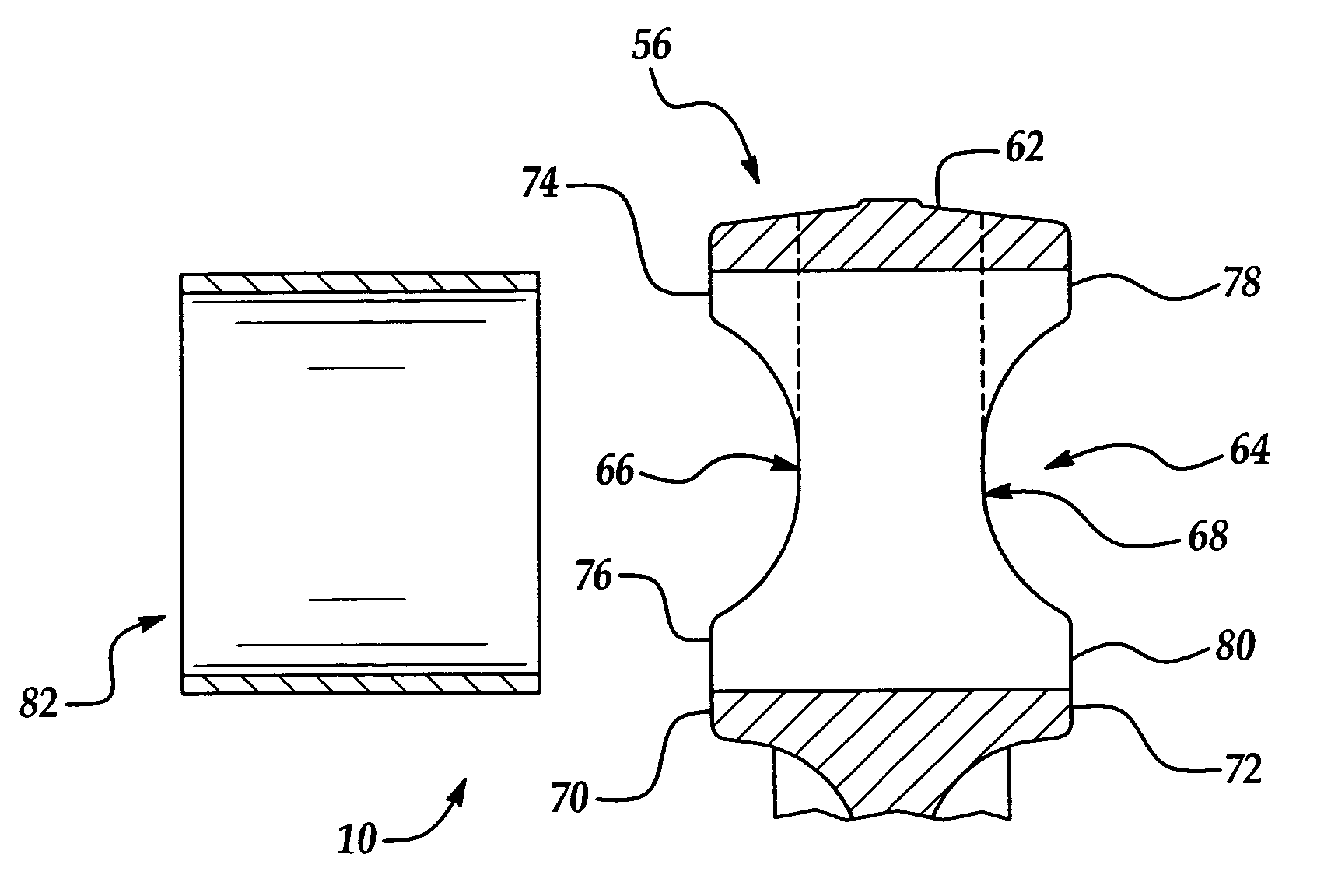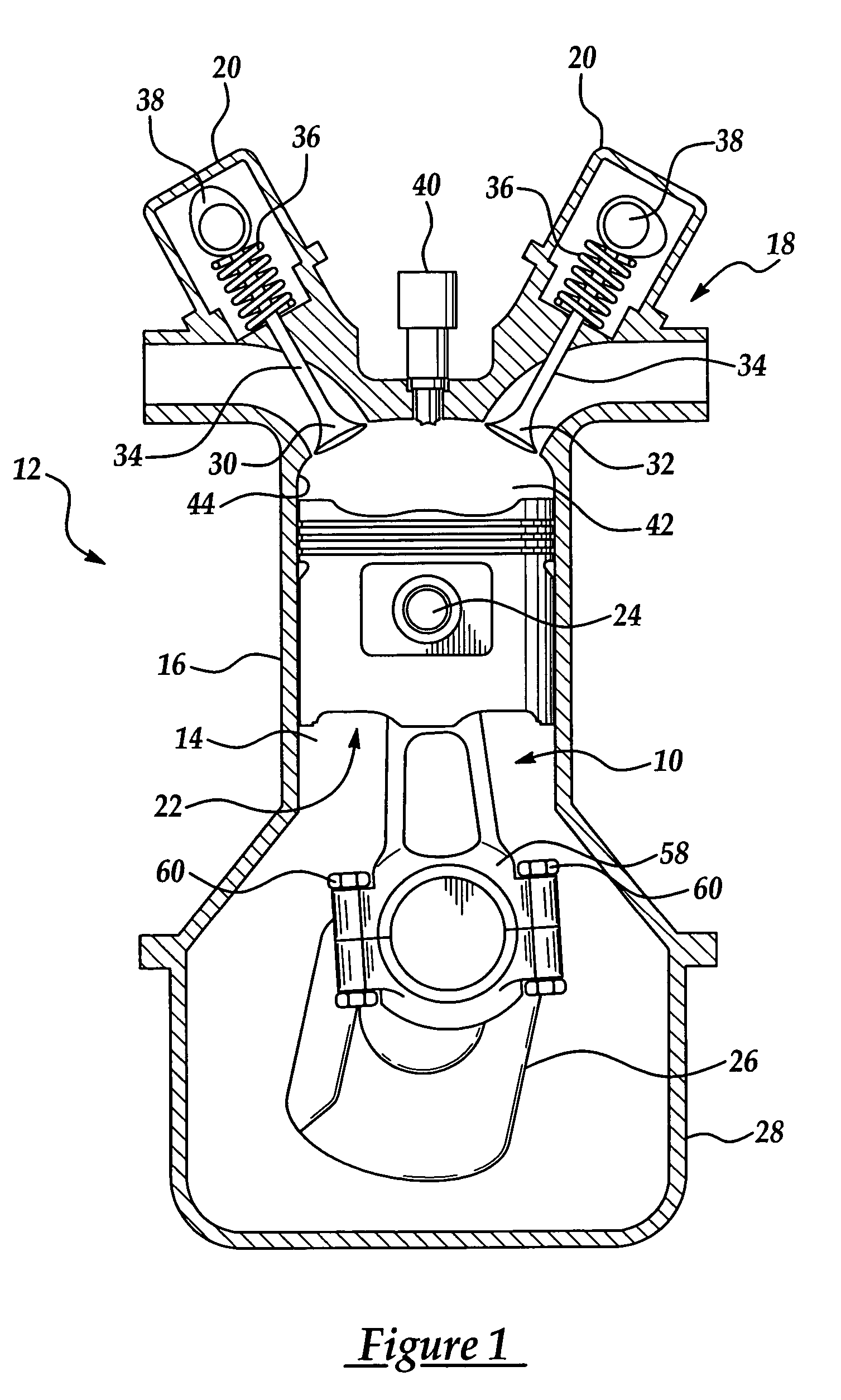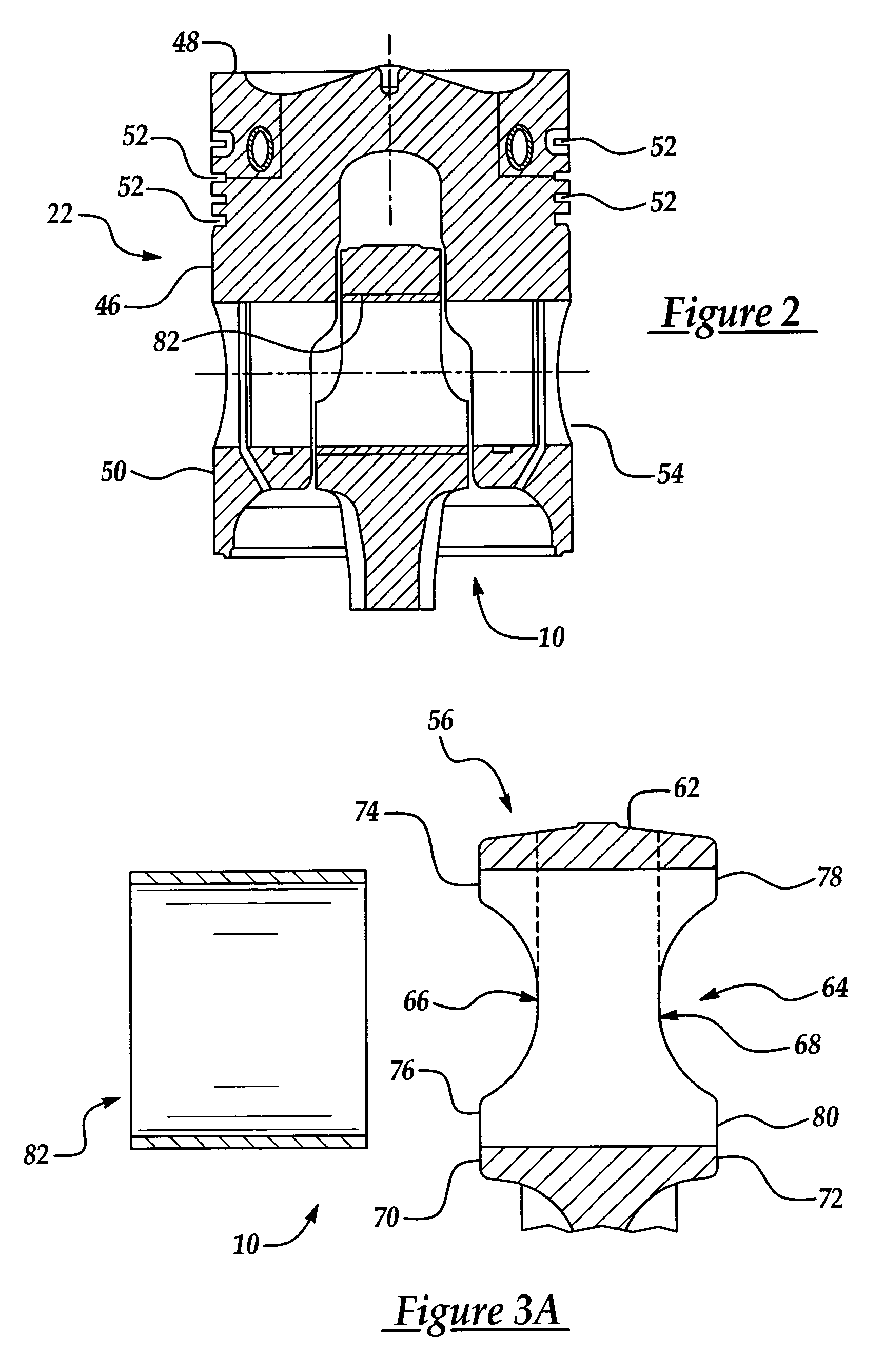Method of manufacturing a connecting rod assembly for an internal combustion engine
a technology of connecting rods and internal combustion engines, which is applied in the direction of connecting rod bearings, manufacturing tools, machines/engines, etc., can solve the problems of engine damage, premature bushing failure, and reduce the optimum efficiency at this pivot point, so as to reduce the likelihood of deformation of the bushing, reduce the moment force, and eliminate the effect of moment forces
- Summary
- Abstract
- Description
- Claims
- Application Information
AI Technical Summary
Benefits of technology
Problems solved by technology
Method used
Image
Examples
Embodiment Construction
[0028]A connecting rod assembly manufactured pursuant to the method of the present invention is generally indicated at 10 throughout the figures, where like numbers are used to designate like structures throughout the drawings. As shown in FIG. 1, the present invention is particularly adapted for use in an internal combustion engine, generally indicated at 12. In this case, the assembly 10 of the present invention is illustrated in connection with a single cylinder 14 of an internal combustion engine 12 having a dual-overhead cam arrangement. Those having ordinary skill in the art will appreciate that the engine 12 is but one of the many internal combustion engines with which the present invention may be employed. By way of example, the present invention may be employed to manufacture a connecting rod assembly used in a two-stroke or four-stroke engine. The cylinders may be arranged in an in-line, v-shaped, or flat manner or in any other manner commonly known in the art. The present...
PUM
| Property | Measurement | Unit |
|---|---|---|
| width | aaaaa | aaaaa |
| thermal expansion | aaaaa | aaaaa |
| diameter | aaaaa | aaaaa |
Abstract
Description
Claims
Application Information
 Login to View More
Login to View More - R&D
- Intellectual Property
- Life Sciences
- Materials
- Tech Scout
- Unparalleled Data Quality
- Higher Quality Content
- 60% Fewer Hallucinations
Browse by: Latest US Patents, China's latest patents, Technical Efficacy Thesaurus, Application Domain, Technology Topic, Popular Technical Reports.
© 2025 PatSnap. All rights reserved.Legal|Privacy policy|Modern Slavery Act Transparency Statement|Sitemap|About US| Contact US: help@patsnap.com



